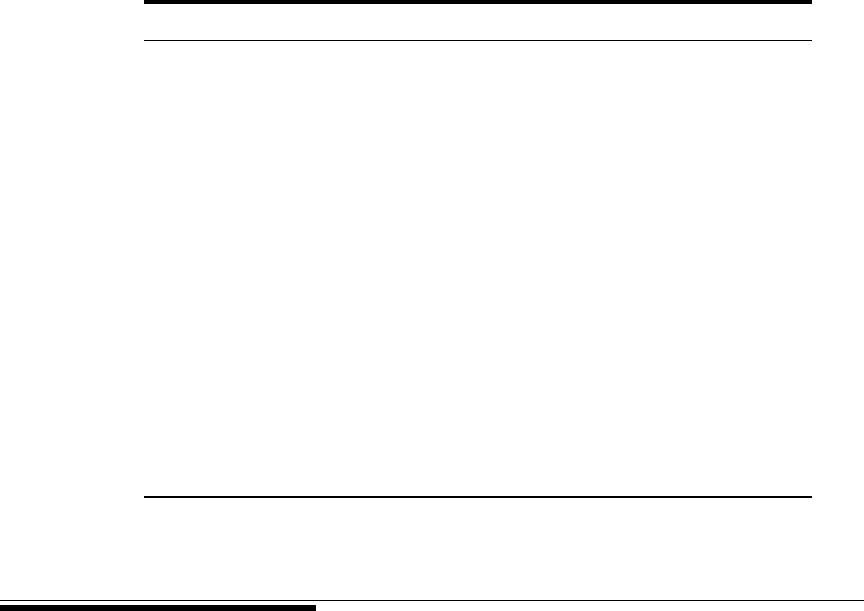Daniel W.W. Biostatistics: A Foundation for Analysis in the Health Sciences
Подождите немного. Документ загружается.


10.3.6 The following data were collected on a simple random sample of 20 patients with hypertension.
The variables are
Patient YX
1
X
2
X
3
X
4
X
5
X
6
1 105 47 85.4 1.75 5.1 63 33
2 115 49 94.2 2.10 3.8 70 14
3 116 49 95.3 1.98 8.2 72 10
4 117 50 94.7 2.01 5.8 73 99
5 112 51 89.4 1.89 7.0 72 95
6 121 48 99.5 2.25 9.3 71 10
7 121 49 99.8 2.25 2.5 69 42
8 110 47 90.9 1.90 6.2 66 8
9 110 49 89.2 1.83 7.1 69 62
10 114 48 92.7 2.07 5.6 64 35
11 114 47 94.4 2.07 5.3 74 90
12 115 49 94.1 1.98 5.6 71 21
13 114 50 91.6 2.05 10.2 68 47
14 106 45 87.1 1.92 5.6 67 80
15 125 52 101.3 2.19 10.0 76 98
16 114 46 94.5 1.98 7.4 69 95
17 106 46 87.0 1.87 3.6 62 18
18 113 46 94.5 1.90 4.3 70 12
19 110 48 90.5 1.88 9.0 71 99
20 122 56 95.7 2.09 7.0 75 99
10.4 EVALUATING THE MULTIPLE
REGRESSION EQUATION
Before one uses a multiple regression equation to predict and estimate, it is desirable to
determine first whether it is, in fact, worth using. In our study of simple linear regression
we have learned that the usefulness of a regression equation may be evaluated by a con-
sideration of the sample coefficient of determination and estimated slope. In evaluating a
multiple regression equation we focus our attention on the coefficient of multiple deter-
mination and the partial regression coefficients.
The Coefficient of Multiple Determination In Chapter 9 the coeffi-
cient of determination is discussed in considerable detail. The concept extends logically
X
6
= measure of stress
X
5
= basal pulse 1beatsthn/min2
X
4
= duration of hypertension 1years2
X
3
= body surface area 1sq m2
X
2
= weight 1kg2
X
1
= age 1years2
Y = mean arterial blood pressure 1mm Hg2
10.4 EVALUATING THE MULTIPLE REGRESSION EQUATION 497

to the multiple regression case. The total variation present in the Y values may be par-
titioned into two components—the explained variation, which measures the amount of
the total variation that is explained by the fitted regression surface, and the unexplained
variation, which is that part of the total variation not explained by fitting the regression
surface. The measure of variation in each case is a sum of squared deviations. The total
variation is the sum of squared deviations of each observation of Y from the mean of the
observations and is designated by or SST. The explained variation, desig-
nated is the sum of squared deviations of the calculated values from the
mean of the observed Y values. This sum of squared deviations is called the sum of
squares due to regression (SSR). The unexplained variation, written as is
the sum of squared deviations of the original observations from the calculated values.
This quantity is referred to as the sum of squares about regression or the error sum of
squares (SSE). We may summarize the relationship among the three sums of squares with
the following equation:
(10.4.1)
The coefficient of multiple determination, is obtained by dividing the
explained sum of squares by the total sum of squares. That is,
(10.4.2)
The subscript indicates that in the analysis Y is treated as the dependent vari-
able and the X variables from through are treated as the independent variables. The
value of indicates what proportion of the total variation in the observed Y values
is explained by the regression of Y on In other words, we may say that
is a measure of the goodness of fit of the regression surface. This quantity is anal-
ogous to which was computed in Chapter 9.
EXAMPLE 10.4.1
Refer to Example 10.3.1. Compute
Solution: For our illustrative example we have in Figure 10.3.1
R
2
y.12
=
393.39
1061.36
= .3706 L .371
SSE = 667.97
SSR = 393.39
SST = 1061.36
R
2
y .12
.
r
2
,
R
2
y.12 . . . k
X
1
, X
2
,...,X
k
.
R
2
y.12 . . . k
X
k
X
1
y.12 . . . k
R
2
y.12 . . . k
=
g1y
N
j
- y2
2
g1y
j
- y2
2
=
SSR
SST
R
2
y.12 . . . k
+ unexplained 1error2sum of squares
total sum of squares = explained 1regression2sum of squares
SST = SSR + SSE
g1y
j
- y2
2
= g1y
N
j
- y2
2
+ g1y
j
- y
N
j
2
2
g1y
j
- y
N
j
2
2
,
g1y
N
j
- y2
2
,
g1y
j
- y2
2
498 CHAPTER 10 MULTIPLE REGRESSION AND CORRELATION

We say that about 37.1 percent of the total variation in the Y values is
explained by the fitted regression plane, that is, by the linear relationship
with age and education level. ■
Testing the Regression Hypothesis To determine whether the overall
regression is significant (that is, to determine whether is significant), we may per-
form a hypothesis test as follows.
1. Data. The research situation and the data generated by the research are examined
to determine if multiple regression is an appropriate technique for analysis.
2. Assumptions. We assume that the multiple regression model and its underlying
assumptions as presented in Section 10.2 are applicable.
3. Hypotheses. In general, the null hypothesis is
and the alternative is not all In words, the null hypothesis
states that all the independent variables are of no value in explaining the variation
in the Y values.
4. Test statistic. The appropriate test statistic is V.R., which is computed as part
of an analysis of variance. The general ANOVA table is shown as Table 10.4.1.
In Table 10.4.1, MSR stands for mean square due to regression and MSE stands
for mean square about regression or, as it is sometimes called, the error mean
square.
5. Distribution of test statistic. When is true and the assumptions are met, V.R.
is distributed as F with k and degrees of freedom.
6. Decision rule. Reject if the computed value of V.R. is equal to or greater than
the critical value of F.
7. Calculation of test statistic. See Table 10.4.1.
8. Statistical decision. Reject or fail to reject in accordance with the decision
rule.
9. Conclusion. If we reject we conclude that, in the population from which the
sample was drawn, the dependent variable is linearly related to the independent vari-
ables as a group. If we fail to reject we conclude that, in the population from
which our sample was drawn, there may be no linear relationship between the
dependent variable and the independent variables as a group.
10. p value. We obtain the p value from the table of the F distribution.
We illustrate the hypothesis testing procedure by means of the following example.
H
0
,
H
0
,
H
0
H
0
n - k - 1
H
0
b
i
= 0.H
A
:b
k
= 0
H
0
: b
1
= b
2
= b
3
=
. . .
=
R
2
y.12
10.4 EVALUATING THE MULTIPLE REGRESSION EQUATION
499
TABLE 10.4.1 ANOVA Table for Multiple Regression
Source SS
d.f.
MS V.R.
Due to regression
SSR k
About regression
SSE
Total
SST
n - 1
MSE = SSE>1n - k - 12n - k - 1
MSR>MSEMSR = SSR>k

EXAMPLE 10.4.2
We wish to test the null hypothesis of no linear relationship among the three variables
discussed in Example 10.3.1: CDA score, age, and education level.
Solution:
1. Data. See the description of the data given in Example 10.3.1.
2. Assumptions. We assume that the assumptions discussed in Section
10.2 are met.
3. Hypotheses.
4. Test statistic. The test statistic is V.R.
5. Distribution of test statistic. If is true and the assumptions are met,
the test statistic is distributed as F with 2 numerator and 68 denomina-
tor degrees of freedom.
6. Decision rule. Let us use a significance level of The decision
rule, then, is reject if the computed value of V.R. is equal to or greater
than 4.95 (obtained by interpolation).
7. Calculation of test statistic. The ANOVA for the example is shown
in Figure 10.3.1, where we see that the computed value of V.R. is
20.02.
8. Statistical decision. Since 20.02 is greater than 4.95, we reject
9. Conclusion. We conclude that, in the population from which the sam-
ple came, there is a linear relationship among the three variables.
10. p value. Since 20.02 is greater than 5.76, the p value for the test is less
than .005.
■
Inferences Regarding Individual Frequently, we wish to evaluate the
strength of the linear relationship between Y and the independent variables individually.
That is, we may want to test the null hypothesis that against the alternative
The validity of this procedure rests on the assumptions stated earlier:
that for each combination of values there is a normally distributed subpopulation of Y
values with variance
Hypothesis Tests for the To test the null hypothesis that is equal to
some particular value, say, the following t statistic may be computed:
(10.4.3)
where the degrees of freedom are equal to and is the standard deviation
of the b
N
i
.
s
b
N
i
n - k - 1,
t =
b
N
i
- b
i0
s
b
N
i
b
i0
,
b
i
B
i
s
2
.
X
i
1i = 1, 2, . . . , k2.
b
i
Z 0b
i
= 0
B’s
H
0
.
H
0
a = .01.
H
0
H
A
: = not all b
i
= 0
H
0
: = b
1
= b
2
= 0
500 CHAPTER 10 MULTIPLE REGRESSION AND CORRELATION

The standard deviations of the are given as part of the output from most com-
puter software packages that do regression analysis.
EXAMPLE 10.4.3
Let us refer to Example 10.3.1 and test the null hypothesis that age (years) is irrelevant
in predicting the capacity to direct attention (CDA).
Solution:
1. Data. See Example 10.3.1.
2. Assumptions. See Section 10.2.
3. Hypotheses.
4. Test statistic. See Equation 10.4.3.
5. Distribution of test statistic. When is true and the assumptions are
met, the test statistic is distributed as Student’s t with 68 degrees of
freedom.
6. Decision rule. Reject if the computed t is either greater than or equal
to 1.9957 (obtained by interpolation) or less than or equal to
7. Calculation of test statistic. By Equation 10.4.3 and data from Figure
10.3.1 we compute
8. Statistical decision. The null hypothesis is rejected since the computed
value of is less than
9. Conclusion. We conclude, then, that there is a linear relationship
between age and CDA in the presence of education level.
10. p value. For this test, because
(obtained by interpolation).
■
Now, let us perform a similar test for the second partial regression coefficient,
t =
b
N
2
- 0
s
b
N
2
=
.6108
.1357
= 4.50
a = .05
H
A
: b
2
Z 0
H
0
: b
2
= 0
b
2
:
-3.80 6-2.6505p 6 21.0052= .01
-1.9957.t, -3.80,
t =
b
N
1
- 0
s
b
N
1
=
-.18412
.04851
=-3.80
-1.9957.
H
0
H
0
Let a = .05
H
A
: b
1
Z 0
H
0
: b
1
= 0
b
N
i
10.4 EVALUATING THE MULTIPLE REGRESSION EQUATION
501
In this case also the null hypothesis is rejected, since 4.50 is greater than 1.9957. We
conclude that there is a linear relationship between education level and CDA in the pres-
ence age, and that education level, used in this manner, is a useful variable for predict-
ing CDA. [For this test, ]
Confidence Intervals for the
i
When the researcher has been led to conclude
that a partial regression coefficient is not 0, he or she may be interested in obtaining a
confidence interval for this Confidence intervals for the may be constructed in the
usual way by using a value from the t distribution for the reliability factor and standard
errors given above.
A percent confidence interval for is given by
For our illustrative example we may compute the following 95 percent confidence
intervals for and
The 95 percent confidence interval for is
The 95 percent confidence interval for is
We may give these intervals the usual probabilistic and practical interpretations. We are
95 percent confident, for example, that is contained in the interval from .3400 to .8816
since, in repeated sampling, 95 percent of the intervals that may be constructed in this
manner will include the true parameter.
Some Precautions
One should be aware of the problems involved in carrying out
multiple hypothesis tests and constructing multiple confidence intervals from the same
sample data. The effect on of performing multiple hypothesis tests from the same data
is discussed in Section 8.2. A similar problem arises when one wishes to construct
confidence intervals for two or more partial regression coefficients. The intervals will not
be independent, so that the tabulated confidence coefficient does not, in general, apply.
In other words, all such intervals would not be percent confidence intervals.
In order to maintain approximate confidence intervals for partial
regression coefficients, adjustments must be made to the calculation of errors in the pre-
vious equations. These adjustments are sometimes called family-wise error rates, and
can be found in many computer software packages. The topic is discussed in detail by
Kutner, et al. (4).
10011 - a2
10011 - a2
a
b
2
.3400, .8816
.6108 ; .2708
.6108 ; 11.995721.13572
b
2
-.28092, -.08732
-.18412 ; .0968
-.18412 ; 1.99571.048512
b
1
b
2
.b
1
b
N
i
; t
1-1a>22,n-k-1
s
b
N
i
b
i
10011 - a2
b
i
b
i
.
B
p 6 21.0052= .01.
502
CHAPTER 10 MULTIPLE REGRESSION AND CORRELATION

Another problem sometimes encountered in the application of multiple regression
is an apparent incompatibility in the results of the various tests of significance that one
may perform. In a given problem for a given level of significance, one or the other of
the following situations may be observed.
1. and all significant
2. and some but not all significant
3. significant but none of the significant
4. All significant but not
5. Some significant, but not all nor
6. Neither nor any significant
Notice that situation 1 exists in our illustrative example, where we have a significant
and two significant regression coefficients. This situation does not occur in all cases.
In fact, situation 2 is very common, especially when a large number of independent vari-
ables have been included in the regression equation.
EXERCISES
10.4.1 Refer to Exercise 10.3.1. (a) Calculate the coefficient of multiple determination; (b) perform an
analysis of variance; (c) test the significance of each Let for all tests of sig-
nificance and determine the p value for all tests; (d) construct a 95 percent confidence interval for
each significant sample slope.
10.4.2 Refer to Exercise 10.3.2. Do the analysis suggested in Exercise 10.4.1.
10.4.3 Refer to Exercise 10.3.3. Do the analysis suggested in Exercise 10.4.1.
10.4.4 Refer to Exercise 10.3.4. Do the analysis suggested in Exercise 10.4.1.
10.4.5 Refer to Exercise 10.3.5. Do the analysis suggested in Exercise 10.4.1.
10.4.6 Refer to Exercise 10.3.6. Do the analysis suggested in Exercise 10.4.1.
10.5 USING THE MULTIPLE
REGRESSION EQUATION
As we learned in the previous chapter, a regression equation may be used to obtain a
computed value of when a particular value of X is given. Similarly, we may use our
multiple regression equation to obtain a value when we are given particular values of
the two or more X variables present in the equation.
Just as was the case in simple linear regression, we may, in multiple regression,
interpret a value in one of two ways. First we may interpret as an estimate of the
mean of the subpopulation of Y values assumed to exist for particular combinations of
values. Under this interpretation is called an estimate, and when it is used for this pur-
pose, the equation is thought of as an estimating equation. The second interpretation of
y
N
X
i
y
N
y
N
y
N
y
N
Y,
a = .05b
N
i
1i 7 02.
R
2
b
N
i
R
2
R
2
b
N
i
R
2
b
N
i
b
N
i
R
2
b
N
i
R
2
b
N
i
R
2
10.5 USING THE MULTIPLE REGRESSION EQUATION
503

is that it is the value Y is most likely to assume for given values of the In this case
is called the predicted value of Y, and the equation is called a prediction equation. In
both cases, intervals may be constructed about the value when the normality assump-
tion of Section 10.2 holds true. When is interpreted as an estimate of a population mean,
the interval is called a confidence interval, and when is interpreted as a predicted value
of Y, the interval is called a prediction interval. Now let us see how each of these inter-
vals is constructed.
The Confidence Interval for the Mean of a Subpopulation of
Y
Values Given Particular Values of the We have seen that a
percent confidence interval for a parameter may be constructed by the gen-
eral procedure of adding to and subtracting from the estimator a quantity equal to the reli-
ability factor corresponding to multiplied by the standard error of the estimator.
We have also seen that in multiple regression the estimator is
(10.5.1)
If we designate the standard error of this estimator by the percent con-
fidence interval for the mean of Y, given specified is as follows:
(10.5.2)
The Prediction Interval for a Particular Value of
Y
Given
Particular Values of the
When we interpret as the value Y is most
likely to assume when particular values of the are observed, we may construct a
prediction interval in the same way in which the confidence interval was constructed.
The only difference in the two is the standard error. The standard error of the predic-
tion is slightly larger than the standard error of the estimate, which causes the pre-
diction interval to be wider than the confidence interval.
If we designate the standard error of the prediction by the percent
prediction interval is
(10.5.3)
The calculations of and in the multiple regression case are complicated and will
not be covered in this text. The reader who wishes to see how these statistics are calcu-
lated may consult the book by Anderson and Bancroft (3), other references listed at the
end of this chapter and Chapter 9, and previous editions of this text. The following exam-
ple illustrates how MINITAB may be used to obtain confidence intervals for the mean
of Y and prediction intervals for a particular value of Y.
EXAMPLE 10.5.1
We refer to Example 10.3.1. First, we wish to construct a 95 percent confidence inter-
val for the mean CDA score (Y) in a population of 68-year-old subjects who com-
pleted 12 years of education Second, suppose we have a subject who is 68 years1X
2
2.
1X
1
2
s
¿
y
N
j
s
y
N
j
y
N
j
; t
11-a>22,n-k-1
s¿
yN
j
10011 - a2s
¿
y
N
,
X
i
y
N
X
i
y
N
j
; t
11-a>22,n-k -1
s
y
N
j
X
i
10011 - a2s
y
N
,
y
N
j
= b
N
0
+ b
N
1
x
1j
+ b
N
2
x
2j
+
. . .
+ b
N
k
x
k
j
1 - a
10011 - a2
X
i
y
N
y
N
y
N
y
N
X
i
.y
N
504
CHAPTER 10 MULTIPLE REGRESSION AND CORRELATION

of age and has an education level of 12 years. What do we predict to be this subject’s
CDA score?
Solution: The point estimate of the mean CDA score is
The point prediction, which is the same as the point estimate obtained pre-
viously, also is
To obtain the confidence interval and the prediction interval for the
parameters for which we have just computed a point estimate and a point
prediction, we use MINITAB as follows. After entering the information
for a regression analysis of our data as shown in Figure 10.3.1, we click
on Options in the dialog box. In the box labeled “Prediction intervals for
new observations,” we type 68 and 12 and click OK twice. In addition
to the regression analysis, we obtain the following output:
New Obs Fit SE Fit 95.0% CI 95.0% PI
1 0.303 0.672 (1.038, 1.644) (6.093, 6.699)
We interpret these intervals in the usual ways. We look first at the
confidence interval. We are 95 percent confident that the interval from
to includes the mean of the subpopulation of Y values for the
specified combination of values, since this parameter would be included
in about 95 percent of the intervals that can be constructed in the manner
shown.
Now consider the subject who is 68 years old and has 12 years of
education. We are 95 percent confident that this subject would have a CDA
score somewhere between and The fact that the P.I. is wider
than the C.I. should not be surprising. After all, it is easier to estimate the
mean response than it is estimate an individual observation. ■
EXERCISES
For each of the following exercises compute the y value and construct (a) 95 percent confidence
and (b) 95 percent prediction intervals for the specified values of
10.5.1 Refer to Exercise 10.3.1 and let and
10.5.2 Refer to Exercise 10.3.2 and let and
10.5.3 Refer to Exercise 10.3.3 and let and
10.5.4 Refer to Exercise 10.3.4 and let and x
2j
= 2.x
1j
= 1
x
2j
= 6.x
1j
= 5
x
3j
= 22.x
1j
= 50, x
2j
= 20,
x
2j
= 35.x
1j
= 95
X
i
.
6.699.-6.093
X
i
1.644-1.038
yN = 5.494 - .184121682+ .61081122= .3034
yN = 5.494 - .184121682+ .61081122= .3034
EXERCISES 505

10.5.5 Refer to Exercise 10.3.5 and let and
10.5.6 Refer to Exercise 10.3.6 and let and
10.6 THE MULTIPLE CORRELATION MODEL
We pointed out in the preceding chapter that while regression analysis is concerned with
the form of the relationship between variables, the objective of correlation analysis is to
gain insight into the strength of the relationship. This is also true in the multivariable
case, and in this section we investigate methods for measuring the strength of the rela-
tionship among several variables. First, however, let us define the model and assump-
tions on which our analysis rests.
The Model Equation We may write the correlation model as
(10.6.1)
where is a typical value from the population of values of the variable Y, the are
the regression coefficients defined in Section 10.2, and the are particular (known) val-
ues of the random variables This model is similar to the multiple regression model,
but there is one important distinction. In the multiple regression model, given in Equa-
tion 10.2.1, the are nonrandom variables, but in the multiple correlation model the
are random variables. In other words, in the correlation model there is a joint distribu-
tion of Y and the that we call a multivariate distribution. Under this model, the vari-
ables are no longer thought of as being dependent or independent, since logically they
are interchangeable and either of the may play the role of Y.
Typically, random samples of units of association are drawn from a population of
interest, and measurements of Y and the are made.
A least-squares plane or hyperplane is fitted to the sample data by methods
described in Section 10.3, and the same uses may be made of the resulting equation.
Inferences may be made about the population from which the sample was drawn if it
can be assumed that the underlying distribution is normal, that is, if it can be assumed
that the joint distribution of Y and is a multivariate normal distribution. In addition,
sample measures of the degree of the relationship among the variables may be computed
and, under the assumption that sampling is from a multivariate normal distribution, the
corresponding parameters may be estimated by means of confidence intervals, and
hypothesis tests may be carried out. Specifically, we may compute an estimate of the
multiple correlation coefficient that measures the dependence between Y and the This
is a straightforward extension of the concept of correlation between two variables that we
discuss in Chapter 9. We may also compute partial correlation coefficients that measure
the intensity of the relationship between any two variables when the influence of all other
variables has been removed.
The Multiple Correlation Coefficient As a first step in analyzing
the relationships among the variables, we look at the multiple correlation coefficient.
X
i
.
X
i
X
i
X
i
X
i
X
i
X
i
X
i
.
x
ij
b’sy
j
y
j
= b
0
+ b
1
x
1j
+ b
2
x
2j
+
Á
+ b
k
x
kj
+P
j
x
6j
= 70.
x
4j
= 6.00, x
5j
= 75,x
3j
= 2.00,x
1j
= 50, x
2j
= 95.0,
x
2j
= 80.x
1j
= 90
506 CHAPTER 10 MULTIPLE REGRESSION AND CORRELATION
